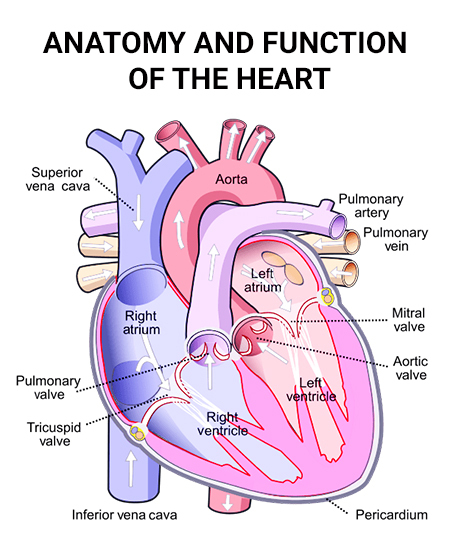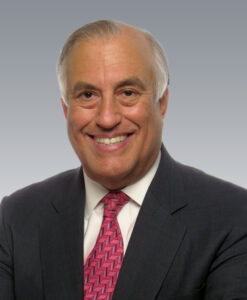Heart function may be affected due to several factors, including congenital heart disease or heart damage resulting from illness or other reasons. Get immediate professional medical care as abnormal heart function may lead to life-threatening complications such as heart failure. Schedule an appointment with Dr. Steven Reisman at the New York Cardiac Diagnostic Center to have your condition accurately diagnosed and treated. With his experience and dedication, Dr. Reisman will guide you regarding the prevention and treatment of different types of heart disease to take good care of this vital organ.
The heart is essential to life and wellbeing. Do not ignore your heart health as it could land you in serious trouble. If you experience chest pain, a very slow or fast heartbeat, or other symptoms such as dizziness or fainting and swelling in the legs, get expert medical help.
The heart is a muscular organ situated in the chest just behind and slightly toward the left of the breastbone. It works all the time, pumping blood through the network of blood vessels called the arteries. The heart and its blood vessels make up the cardiovascular system. It plays a crucial role in delivering blood to all parts of the body for normal functioning.
How Does the Heart Work?

The human heart is the most powerful organ in the body that is responsible for life. As it beats, it delivers oxygen-filled blood to the rest of the body to help it function normally. It pounds around 100,000 times a day and pumps approximately 10 pints of blood throughout the body with the help of the circulatory system. It delivers oxygen and nutrient-rich blood to tissues and organs and carries away deoxygenated blood.
The heart is surrounded by a double-layered sac or protective covering that is called the pericardium. The inner layer of the pericardium is attached to the heart muscle. Ligaments attach the outer layer to the spinal column, diaphragm, and other body parts. The fluid between the two layers lubricates the heart and prevents friction between the heart and the surrounding organs as it moves with the beats.
A poorly functioning heart can have a significant impact on the quality of your life. Understanding its essential functions and taking good care of your heart is the best way to keep it healthy.
Some significant facts about the human heart anatomy:
- The human heart is about the size of a giant fist;
- It weighs between about 10 to 12 ounces (280 to 340 grams) in men and 8 to 10 ounces (230 to 280 grams) in women;
- A heart beats about 100,000 times per day which makes about 3 billion beats in a lifetime;
- An adult heart beats about 60 to 100 times per minute;
- A newborn heart beats faster than an adult heart;
- The heart pumps about 5 liters of blood throughout the body;
- The heart is situated in the center of the chest, usually pointing slightly left.
You can face heart rhythm issues or an increased risk of heart disease if any part of this complex system fails to function correctly. If you have any unusual symptoms that suggest problems with heart functioning, contact an expert heart doctor without any delay.
Chambers of the Heart
The heart consists of four chambers that function together as a two-sided pump. The left side of the heart pumps fresh, oxygen-rich blood out into the body through the arteries. The right side of the heart collects the used blood through the veins.
The top chambers of the heart are called the left atrium and right atrium. The bottom chambers are known as the left ventricle and right ventricle. The left and right ventricles have thicker walls as compared to the left and right atrium.
Functions of Heart Chambers
Each chamber has its function to perform, which is crucial for the healthy functioning of the heart. The functions include:
- The right atrium receives blood from the veins, circulates through the body, and pumps it over to the right ventricle.
- The right ventricle passes the blood onto the pulmonary artery, sending it to the lungs to pick up oxygen.
- The left atrium receives the oxygen-rich blood from the lungs and pumps it into the left ventricle.
- The left ventricle pumps the oxygen-rich blood to the body through a complex network of arteries.
The contractions of the left ventricle, the strongest of the four chambers, create blood pressure in the body.
Heart Valves
The flow of blood into the heart, within the heart chambers, and from the heart is protected by the four valves present in the heart. These valves are open and close to allow the blood to move through the heart.
Functions of heart valves:
- The tricuspid valve controls blood flow from the right atrium to the right ventricle.
- The pulmonary valve regulates blood flow from the right ventricle to the pulmonary arteries.
- The mitral valve opens to allow blood to move from the left atrium to the left ventricle.
- The aortic valve allows oxygen-rich blood to move from the left ventricle to the largest artery’s aorta.
Valves prevent backflow, keeping the blood flowing in one direction through the heart.
The heart also requires oxygenated blood to function that is supplied by coronary arteries running along its surface. A complex system of nerves runs through the heart that carries the electrical impulses responsible for making the heartbeat and controls the contraction and relaxation.
What Are the Main Functions of the Heart?
The four essential functions of the heart include:
- Pumping oxygenated blood to the other parts of the body
- Pumping hormones and other vital substances to different parts of the body
- Receiving deoxygenated or used blood and pumping it to the lungs for oxygenation
- Maintaining blood pressure
The most common conditions related to the heart include coronary heart disease (CAD), angina, arrhythmia, cardiac arrest, and congestive heart failure, to name a few. Do not let these problems affect your life and work. Seek immediate medical attention to know more about how the heart works and protect this life-giving organ with better choices. Dr. Steven Reisman at the New York Cardiac Diagnostic Center will educate you regarding heart health and help you stay active to enjoy a better quality of life.

Dr. Steven Reisman is an internationally recognized cardiologist and heart specialist. He is a member of the American College of Cardiology, American Heart Association, and a founding member of the American Society of Nuclear Cardiology.
Dr. Reisman has presented original research findings for the early detection of "high risk" heart disease and severe coronary artery disease at the annual meetings of both the American College of Cardiology and the American Heart Association. Dr. Reisman was part of a group of doctors with the Food and Drug Administration who evaluated the dipyridamole thallium testing technique before the FDA approved it.
Dr. Steven Reisman's academic appointments include Assistant Professor of Medicine at the University of California and Assistant Professor at SUNY. Hospital appointments include the Director of Nuclear Cardiology at the Long Island College Hospital.



